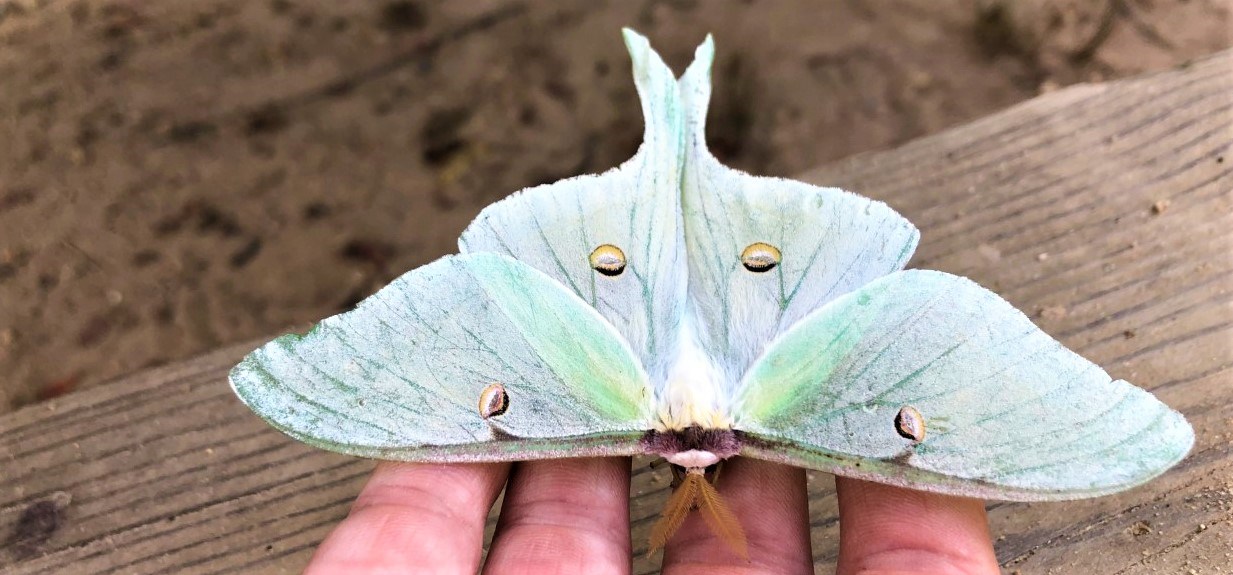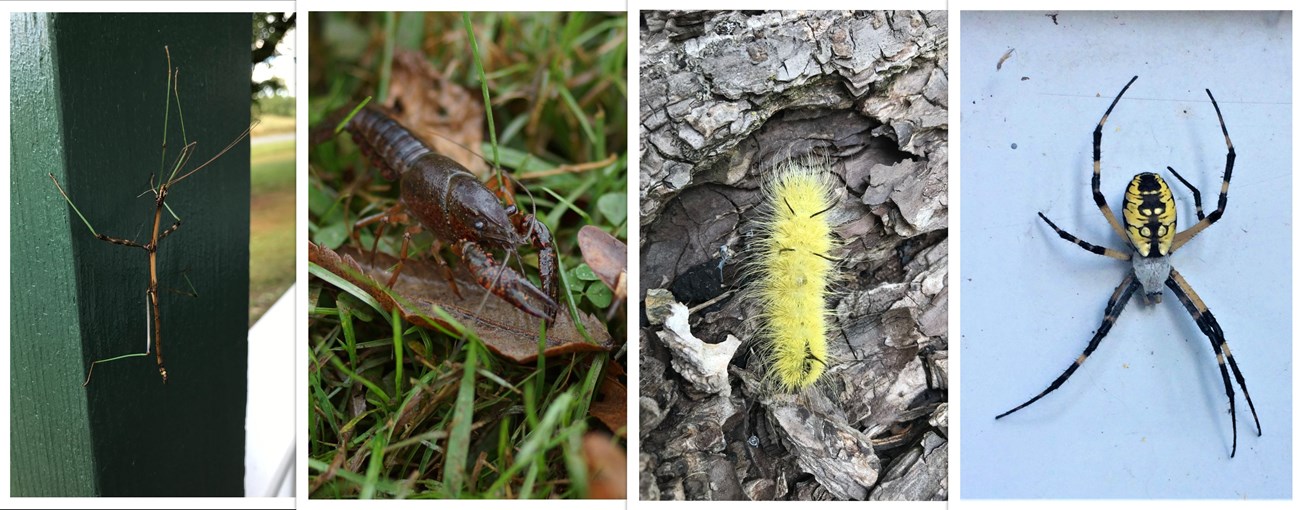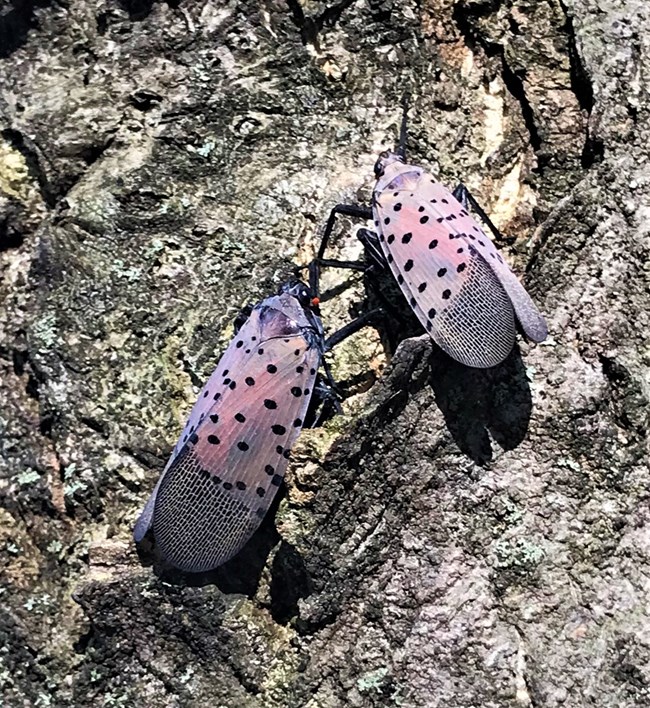|
Some Call Them Creepy-Crawlers, But We Think They Are Beautiful! Invertebrates are animals without a spinal cord and represent roughly 97% of the animal kingdom in the world. Invertebrates range from aquatic species such as crustaceans, mussels and clams, to ground-loving species such as worms, beetles, moths, butterflies, and other insects. Invertebrate species play an important function in our ecosystem. For example, decomposers such as worms and beetles, break down organic matter like fallen trees and leaf litter and return the nutrients back into the soil for new plants to grow. They could be called the “recyclers” of the Earth. Typically, invertebrate species are consumed by larger species, such as birds and fish. 
NPS photo. The park serves as an important habitat to butterflies, with the mixed farmland and forest landscapes. Some species we see often are: the Monarch Butterfly, the Meadow Fritillary, the Common Buckeye, the Red-spotted Admiral, and the Eastern Tiger Swallowtail. 
NPS photo. More information about the four photos: Masters at hide-and-seek, Walking Sticks are a group of highly camouflaged insects; Crayfish are freshwater crustaceans resembling small lobsters; the American Dagger moth can be considered drab, but its caterpillar has a more remarkable appearance with its body completely covered in bright yellow bristles, with four bunches of black bristles that look like long eyelashes; the female Yellow Garden Spider in our photo has a black abdomen, with symmetrical patches of bright yellow. Yellow Garden spider have an iconic, highly visible, zig-zagging, X-shaped patterned web, often seen in backyard gardens. 
NPS photo. Not all of our small, invertebrate friends in the park are from Delaware though. The park is monitoring the Spotted Lanternfly, an invasive species, which, despite its name, is not a fly. The planthopper came from Asia, and was first discovered in 2014 in Pennsylvania. It has since spread its range, and therefore damaged ecosystems throughout Mid-Atlantic states. The spotted lanternfly lays large egg masses, containing nearly 50 eggs, wherever it chooses. Spotted Lanternfly, from nymphs to adults, can fly, hop, or drop into a vehicle, meaning this pest can easily be transported to new areas where it can develop an infestation! Park staff are working with many other organizations and agencies who all wish to control and manage this invasive species! Learn more about this invasive species, and steps you can take to safely destroy this insect: https://www.nps.gov/articles/spotted-lanternfly-101.htm. |
Last updated: June 3, 2020
